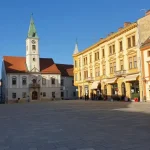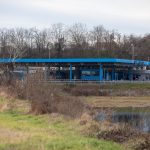ZAGREB, February 4, 2018 – The education of ethnic minorities in Croatia, which a member of parliament from the Independent Democratic Serb Party (SDSS) recently criticised strongly, is generally assessed by representatives of ethnic minorities as positive, however, interviews with them reveal that minority education is burdened by the same type of problems that burden the education of the “majority”.
Experts, too, assess as positive education in minority languages and scripts, as do authorities, which underline “a high level of exercise of constitutionally guaranteed minority rights.”
The attention of the public was drawn to this social issue by SDSS MP Dragana Jeckov, who recently strongly criticised the government, first in the parliament and then at a panel discussion organised by the Serb association “Privrednik”, for stalling the registration of Serb minority schools, a right that is already exercised by the Italian, Czech and Hungarian minorities. The problem continues to exist despite talks at the Science and Education Ministry, at which the dynamic of dealing with it has been agreed, said Jeckov.
Hina sent queries to the Science and Education Ministry and representatives of the seven most numerous ethnic minorities. The Ministry’s answer to Hina’s first query was too general and lacked the necessary facts, in its second answer the Ministry said that a working group would be set up to analyse the matter, and its third reply consisted of an official report on the implementation of the constitutional law on minorities in 2016/2017 in the area of education.
Legislatively, minority education in Croatia is provided at the highest possible level. Students can attend classes according to three models: A, B and C. Most of the models were inherited from the former Yugoslavia, notably in the case of the Italian minority, however, problems have cropped up regarding the so-called new minority – the Serbs – and they are largely due to the legacy of the 1990s war, says social psychologist Dinka Čorkalo Biruški.
Čorkalo Biruški, who works at the Zagreb Faculty of Humanities and Social Sciences, has been involved in a project concerning integrative processes between majority and minority ethnic groups in mixed communities, its focus being the study of inter-ethnic relations between children-members of majority and minority ethnic groups and the education and socialisation challenges they encounter in four multi-ethnic communities where children are taught according to Model A.
Some of the answers to Hina’s queries that arrived from associations representing ethnic minorities lacked the necessary data and contained brief statements that they are satisfied or very satisfied with minority education.
The Serb minority was not contacted as Hina covered the Privrednik panel discussion on the registration of minority schools. The Roma National Council, whose community has been part of a special programme of integration of pupils in the education system, did not send a reply to Hina’s query.
Ethnic minorities in Croatia account for slightly more than 7.5% of the total population. The size of individual minorities does not correspond with the degree of development of their education programmes, their information activities or the number of cultural events they organise.
The Serb minority, which has 186,633 registered members and is the most numerous ethnic minority, in 2017 secured through the Council for Ethnic Minorities 8.7 million kuna for its cultural programmes. It was followed by the Italian minority, which, even though ten times smaller, in 2017 secured 6.3 million kuna for its cultural programmes. The Italian community has a long tradition of exercising its minority rights and is the only minority group in Croatia that has its own daily newspaper, professional theatre and research institution. The Italian minority is financed in line with agreements signed between Croatia and Italy.
The Bosniaks, the third largest minority group, received funding that was by one-third lower than the funding of the Hungarian minority, which is half the size of the Bosniak minority, and less funds than the Czech minority, which is three times smaller than the Bosniak minority.
These indicators are not in direct correlation with public education but rather speak about the quality of minorities’ cultural programmes judged by criteria set by the Council for Ethnic Minorities, as well as about the political and cultural strength of an ethnic community.
In the school year 2016/2017 a total of 10,657 students attended classes in their minority language, in 230 educational institutions, and 1,014 classes/groups. Classes were taught by 1,568 teachers. The Science and Education Ministry met all its obligations and provided books for students in minority primary and secondary schools.
Members of the Italian, Serb, Hungarian and Czech ethnic minorities have classes according to Model A, under which all classes are held in the specific minority’s language and script, but students have to learn the Croatian language. Only the Italian minority has education according to Model A for all age groups, from kindergarten to university.
Education according to this model functions well, and the number of teaching staff is sufficient in most minority communities.
Čorkalo Biruški underlines the importance of the integrative aspect of schools with classes held according to Model A, notably in multi-ethnic communities where children become aware early in their life of languages that are different from theirs.
The articulation of “being different” must be guided competently so that those multi-ethnic communities become both integrated and develop as functioning communities in the best possible way, says Čorkalo Biruški.
Representatives of ethnic minorities do not have any major objections to this model but occasionally report technical shortcomings. They also do not have negative experiences with how they are perceived by members of the majority people.
The Italian minority in Istria and Rijeka cited a number of technical problems in the education of their community but noted that in spite of that, the organisation of classes in minority schools is excellent.
The Democratic Community of Croatian Hungarians (HMDK) said that education according to Model A was common in the Hungarian community and that they did not have any special remarks in that regard.
The Czech minority pointed to the problem of assimilation, recalling that Czechs started arriving in Slavonia close to 200 years ago and that assimilation trends were very strong. In spite of that, interest in Czech language classes is great, as evidenced by the high number of students attending them.
The fact that children from the majority ethnic group attend classes in minority schools shows that minority languages are schools’ added value and proof of the degree of integration of the minority community as well as of the fact that a conflict-free multi-ethnic community is something normal, says Čorkalo Biruški.
Croatia should be proud and underline more strongly how much minority ethnic groups contribute to its culture, science and values, as that has an integrative effect, she says, citing in that context the example of Istria, as the country’s most multi-cultural and highly integrated region, as well as the example of the area of Daruvar, where the Croat majority has embraced Czech values and customs.
Education according to Model B is provided by institutions where students are taught in Croatian, but in separate classrooms. Science subjects are taught in Croatian and social subjects in a minority language.
This model is the least used. In three primary schools, two Hungarian and one Serb, 42 children were taught according to this model in 2017.
Model C envisages classes in the Croatian language, with an extra two to five classes dedicated to a minority language and culture.
Slovenians, who attend Model C classes, do not have negative experiences but note that due to staff shortages in some schools they have to hire teachers from Slovenia.
The Albanian ethnic minority has a shortage of teaching staff but has been dealing with it with the help of the Science and Education Ministry.
The Bosniak Ethnic Community of Croatia (BNZH) says that it was only in September 2017 that the ministry approved classes in the Bosnian language and culture. The project is in the testing stage and if there is sufficient interest, the Bosnian language will be introduced as an additional subject in schools, BNZH president Senad Pršić said.
According to data provided by the Science and Education Ministry, in the school year 2016/2017, 3,607 members of the Serb ethnic minority attended classes in 67 institutions according to all education models.
A total of 337 student groups were taught by 679 teachers.
Speaking at a recent panel discussion organised by the Serb association “Privrednik” MP Dragana Jeckov said the need to register Serb schools as minority schools was one of the main issues for the Serb minority. It has been included in the government’s operational programme, she said, noting that deadlines were drawing near and that the matter should be dealt with very soon.
If we do not have our schools, we will not be able to preserve our national identity, she said, noting that 22 years had passed since the signing of the Erdut agreement and 20 since the peaceful reintegration of the Danube river region but the Serb community could still not exercise that right.
The Serb community uses many benefits of minority education, but the registration of Serb minority schools is being stalled for reasons which the government does not want to comment on.
Social psychologist Čorkalo Biruški says that relations with the Serb community are burdened by the experience of the 1990s war.
“State policy-makers, notably those at the local level, and I would also dare say minority politicians, are failing to care appropriately for the right of children to grow up in an integrated community. The right to education in one’s own language and script is being put to the fore, which I’m strongly in favour of, but as a social psychologist I always insist that that right not be taken out of the context of what is in the child’s best interest,” says Čorkalo Biruški.
She warns of a problem which she considers to be much bigger, namely the fact that students who are taught in the Serbian and Croatian languages in Vukovar attend classes in separate classrooms, with the integrative factor of the school being non-existent.
Schools in Vukovar could compensate for this by organising extracurricular activities for all students, she says, citing in that context positive examples of Italian-Croatian, Czech-Croatian, and Hungarian-Croatian schools.
“We must have understanding for the problems of the Serb community. Its rights should not be different from those of other groups, however, we cannot pretend that the historical burden does not exist. Everyone, especially the state, should therefore make additional effort to promote the great multi-ethnicity of Slavonia and Baranja and free children from that burden,” Corkalo Biruski says, suggesting that in sensitive communities like Vukovar all three models of minority education be offered so that parents are not under the pressure of having to choose one specific model.
She also points to the responsibility of the majority ethnic group.
Minorities have different experiences, mainly positive, says Čorkalo Biruški but admits that there is an “ethnocentric reflex” among Croats. Whenever an issue is raised that concerns a minority, the majority feels that it threatens its own rights, and when the majority group starts shutting itself off, the minority feels less protected and insists more on its rights, says Čorkalo Biruški, noting that minority rights must be promoted in a dialogue between the majority and the minority.
The Serb community’s justified request regarding education rights has become an instrument in communication within the incumbent coalition government.
The attendance of a high government and parliamentary delegation at a recent reception organised by the SDSS on the occasion of Orthodox Christmas received a lot of media coverage.
At that event it was announced that problems of the Serb community would be dealt with, with media putting emphasis on the reconstruction of infrastructure in areas of return while making no special mention of the problem with the registration of Serb schools.
Asked by Hina if anything had changed in that regard in the meantime, SDSS MP Jeckov said that the situation was still unchanged.







